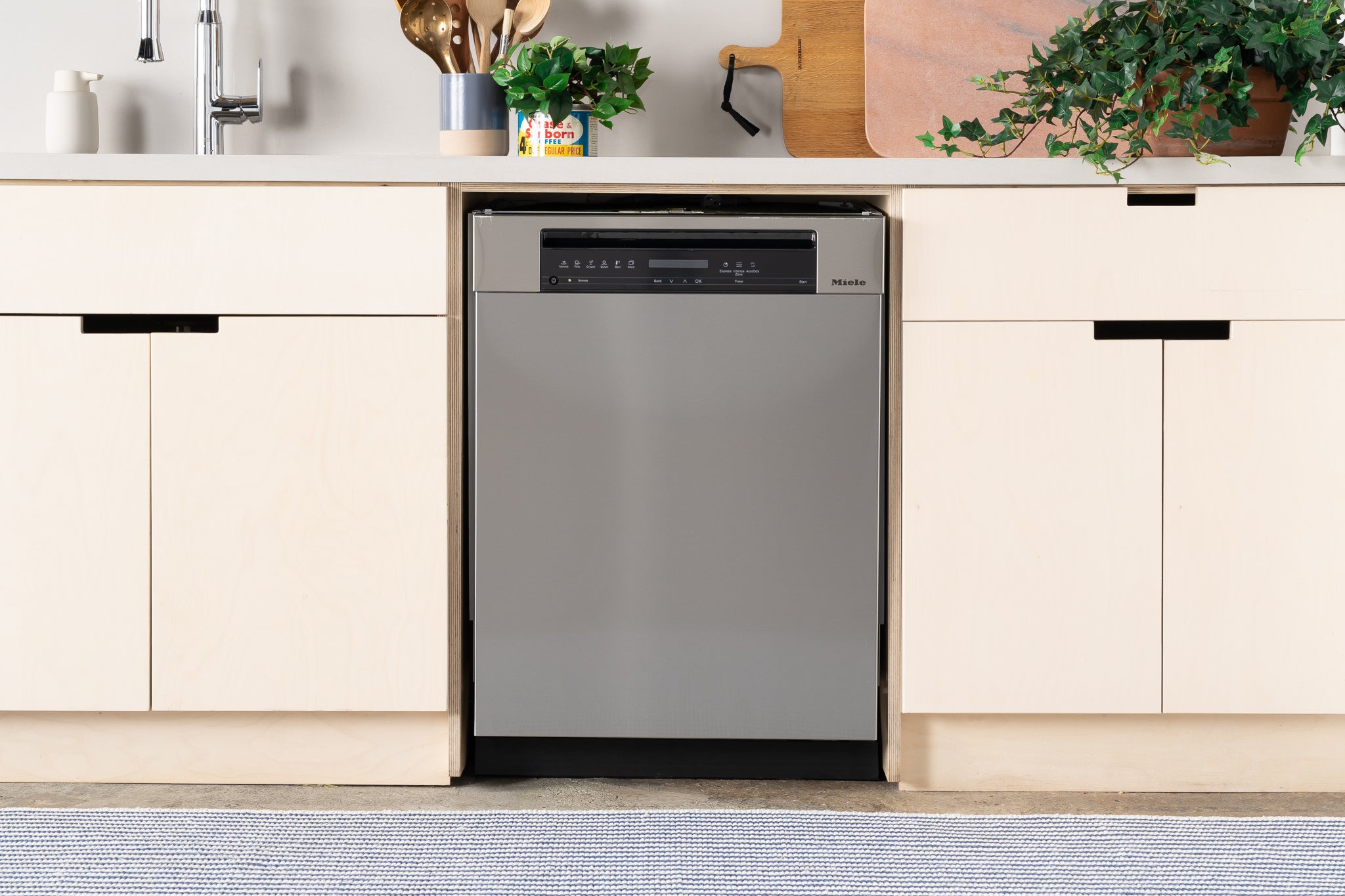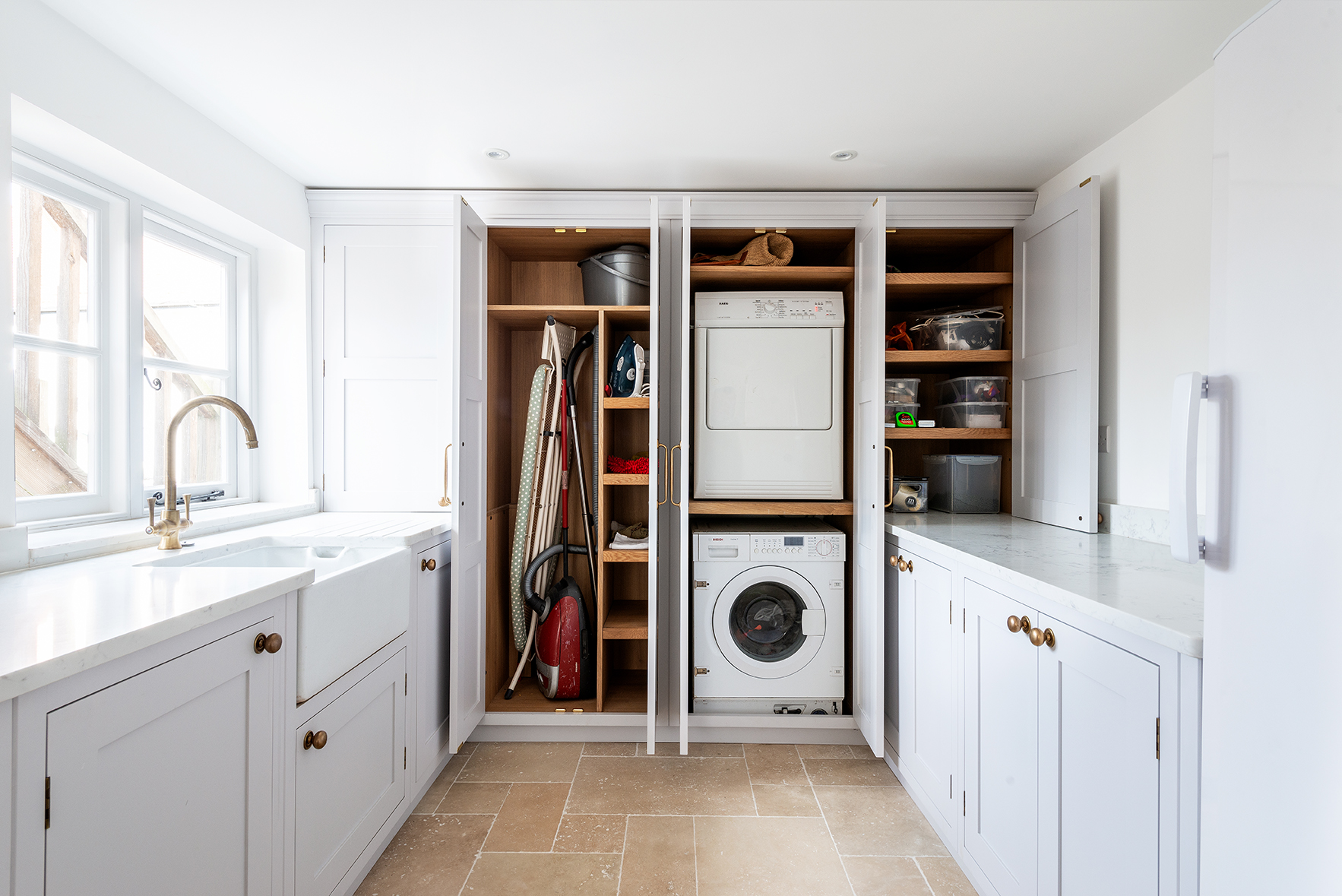At DinnerDude, we understand that kitchen layout plays a pivotal role in your cooking experience. Dive in as we present the top 5 place for dishwasher, ensuring a seamless blend of functionality and design.
What is the best placement for a kitchen?

The best placement for a dishwasher and the overall kitchen layout depends on various factors, including the size and shape of your kitchen, the location of plumbing and electrical connections, and your personal preferences. Here are some general guidelines to consider:
This concept has been a staple of efficient kitchen design for decades. The three main work areas in a kitchen – the sink, stove, and refrigerator – should form a triangle. Ideally, the dishwasher should be placed near the sink for easy rinsing before loading.
- Adjacent to the Sink: This is the most common placement. It allows for easy rinsing of dishes and silverware before loading them into the machine. Additionally, it simplifies plumbing connections.
- Island Placement: If you have a kitchen island with a sink, you can consider placing the dishwasher there. Just ensure that the plumbing can be conveniently set up.
Ensure that when the dishwasher door is open, it doesn’t block foot traffic or access to drawers and cabinets. This is especially important in galley kitchens or smaller kitchen spaces.
Make sure there’s enough clearance between the dishwasher and adjacent cabinets or drawers. This will ensure that the dishwasher door can open fully without hitting or getting blocked by other fixtures.
Today’s dishwashers often come panel-ready, which means you can match them to your cabinetry for a seamless look. If design continuity is crucial for you, consider this option.
Your dishwasher placement might be somewhat dictated by where plumbing and electrical connections are or can be easily installed. Moving these connections can be costly, so if you’re renovating on a budget, you might be limited in your placement choices.
Consider the height at which you’d like the dishwasher to be installed. Some people prefer them a bit elevated to reduce the need for bending down. This can be achieved with drawer dishwashers or platforms.
Ensure that the dishwasher you choose fits the space and complements the style of your kitchen. Today, there are many styles available, from traditional to drawer-style dishwashers.
If your kitchen is open to your living or dining area, you might want to consider the noise level of the dishwasher. Some models are designed to operate very quietly.
Think about how you typically use your kitchen. If you cook frequently and have many pots and pans, you might want the dishwasher closer to the stove. If you entertain often and have more glassware and plates, being near the sink might be more crucial.
Every kitchen and homeowner is unique. It’s essential to consider the factors above in the context of your space and how you use it. Working with a professional kitchen designer can also provide insights into optimizing the layout and placement of appliances in your kitchen.
Looking for a dishwasher that’s optimized for hard water? Ensuring that you select a dishwasher designed for hard water can be a game-changer. Hard water can leave spots on your dishes and also decrease the efficiency of your machine over time. By choosing a dishwasher suitable for hard water, you ensure cleaner dishes and prolong the life of your appliance. Research and choose models that have built-in water softeners or are rated well for hard water areas. Just as the placement of your dishwasher is essential for the flow and functionality of your kitchen, so is selecting the right model for your water type. This will ensure sparkling dishes every time, regardless of the water conditions in your area.
Best place for dishwasher

Take your noise levels into consideration
If noise levels are a primary concern when deciding on the placement of a dishwasher in your kitchen, consider the following guidelines:
- Distance from Living Areas: If your kitchen opens up to a living room, dining area, or any space where quiet is appreciated, consider placing the dishwasher as far away from these areas as possible.
- Cabinetry as a Buffer: Cabinets can act as barriers that absorb or block some of the sound. Placing the dishwasher surrounded by cabinetry, rather than at the end of a run of cabinets, can help contain the noise. Similarly, a deep countertop or a tall backsplash can also act as a sound barrier.
- Choose a Quiet Model: When purchasing a new dishwasher, pay attention to its decibel (dB) rating. A rating in the low 40s or below is considered very quiet. Some of the quietest dishwashers might cost a bit more, but the investment could be worth it if noise is a major concern for you.
- Insulation: Some dishwashers come with built-in sound insulation, but you can also add insulation around the dishwasher to help dampen the noise. This can be done using specialized mats or insulation panels. Always ensure that any additional insulation doesn’t interfere with the operation or ventilation of the appliance.
- Door Seal: Make sure the dishwasher door has a good seal. This not only helps in efficient cleaning but also plays a role in noise containment.
- Dishwasher Position Relative to Floor: Elevated dishwashers or those installed on a platform can bring the noise source closer to ear level. If noise is a concern, you might want to install the dishwasher at the traditional floor level.
- Run During Quieter Times: While this doesn’t relate directly to placement, one strategy to mitigate noise disturbances is to run the dishwasher during times when the noise won’t be bothersome, such as late in the evening (if it won’t disturb sleeping) or when you’re out of the house.
- Regular Maintenance: A well-maintained dishwasher is likely to be quieter. Regularly clean the dishwasher filter, ensure that the spray arms are free-moving and not clogged, and check that all parts are in good condition. Sometimes, a simple repair or replacement of a worn-out component can make the appliance run quieter.
Remember, the ideal dishwasher placement for minimizing noise will depend on your specific kitchen layout and the adjacent living areas. If noise is a significant concern, you might also consider consulting with a kitchen designer or an acoustics expert to find the best solution.
Decide on the left or right side of the sink
.jpeg?wid=1200&fmt=webp)
Deciding whether to place for dishwasher to the left or right of the sink depends on several factors. Here are some considerations to help make the decision:
- Dominant Hand: Most people have a preference or find it more comfortable to rinse or scrape dishes with one hand and then load them with the other. If you’re right-handed, you might find it easier to rinse with your right hand and then place for dishwasher to the left with your left hand, and vice versa.
- Kitchen Workflow: Think about your typical routine in the kitchen. Do you tend to move from the refrigerator to the sink and then to the stove in a particular direction? Your dishwasher should be positioned to facilitate this flow rather than obstruct it.
- Other Appliances and Fixtures: Consider the placement of other key kitchen features, like trash or recycling bins. If you scrape leftovers into the trash before rinsing and loading dishes, having the bin, sink, and dishwasher in a convenient sequence might be helpful.
- Cabinetry and Drawers: Check if there are any pull-out cabinets, drawers, or other fixtures that might obstruct or be obstructed by the dishwasher door when open. Ensure whichever side you choose doesn’t create conflicts with other kitchen functions.
- Kitchen Layout: In some kitchen layouts, like a galley kitchen or kitchens with an island, there might be a clear and more functional choice based on how you can move around with the least obstruction.
- Aesthetic Balance: Sometimes the decision might come down to visual balance. For instance, if there’s a continuous run of cabinetry or countertop on one side, placing a dishwasher on that side might break the visual flow.
- Plumbing and Electrical Connections: While modifications can be made, it might be easier and more cost-effective to place for dishwasher closer to existing plumbing and electrical connections.
- Space for Unloading: Consider where you’ll be placing dishes once they’re clean. If your dish cabinets are to the right of your sink, it might make more sense to have the dishwasher on the right side, so you don’t have to cross over the sink area with clean dishes.
- Size and Shape of the Room: If one side of the sink provides a wider space than the other, it might be more suitable for the dishwasher, especially if you’re considering larger models.
- Personal Preference: Ultimately, some people have a strong personal preference based on past experiences or simply what feels right. Trust your instincts if you lean one way or the other.
In the end, there’s no absolute right or wrong side. It’s a combination of functionality, aesthetics, convenience, and personal preference. If you’re unsure, you might want to consult with a kitchen designer who can provide insights tailored to your specific kitchen layout and habits.
Align your dishwasher with other appliances
| Symmetry | Aim to align the dishwasher with appliances for a uniform look. |
| Cabinetry Design | If using cabinetry panels on appliances, ensure dishwasher panel aligns with adjacent cabinets. |
| Handles | Align dishwasher handles with those of other appliances and match styles. |
| Toe Kick | Match the toe kick depth and height of the dishwasher with adjacent cabinets and appliances. |
| Adjacent Appliances | Ensure open dishwasher doesn’t collide with neighboring appliances. |
| Functionality | Maintain efficient workflow; don’t sacrifice usability for aesthetics. |
| Consultation | If unsure, consider advice from a kitchen designer. |
Hide your dishwasher in a pantry or utility room

Placing a cheap dishwasher under 500$ in a pantry or utility room can be a unique solution for specific scenarios. Here are some considerations and benefits:
- Aesthetics: For homeowners aiming for a minimalistic kitchen look, hiding the dishwasher can help maintain clean lines without appliance interruptions.
- Noise: A pantry or utility room placement can contain the noise, ensuring a quieter kitchen environment.
- Space Management: This setup can free up premium kitchen space, especially in smaller kitchens.
- Bulk Washing: It’s ideal for homes that prefer bulk washing dishes less frequently or for special dishware used on particular occasions.
- Utility Sync: Pairing the dishwasher with other appliances in a utility room, like washing machines, centralizes “cleaning” tasks.
- Secondary Option: For households with two dishwashers, the pantry can house the secondary unit, reserving it for overflow or party needs.
- Ease of Unloading: Organizing clean dishes in a pantry can streamline the storing process, especially if shelves are nearby.
- Safety: Reduces risks in main kitchen areas, especially beneficial in homes with active kids, ensuring no tripping over open dishwasher doors.
- Plumbing Concerns: Ensure that the pantry or utility room has access to necessary water and drainage connections.
- Ventilation: Ensure adequate ventilation to prevent mold growth or trapped moisture in enclosed spaces.
If considering this option, careful planning is essential to ensure that the convenience of the kitchen isn’t compromised.